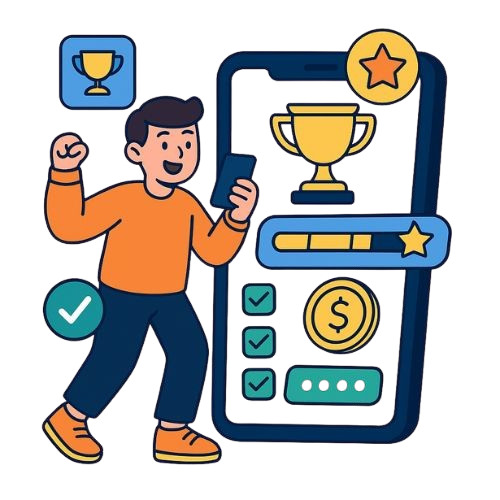Gamification in Fintech Driving Engagement in 2025

Fintech companies are turning to gamification to capture attention and create enjoyable experiences for their users. The idea is to use game mechanics in non-game situations, giving customers a reason to interact more frequently with financial services. This article reviews the role of gamification in boosting user engagement throughout 2025, outlining its benefits, challenges, and the future outlook.
What Does Gamification Mean for Fintech?
Gamification in fintech applies elements found in games—such as scoring systems, challenges, and rewards—to financial services. It adds a fun twist to what might otherwise be seen as routine activities like payments, budgeting, or investing. This approach not only draws users in but also promotes ongoing participation. For companies offering payment processing services, this can mean more loyal customers who feel rewarded for their activity.
By introducing elements like leaderboards, point systems, and achievement badges, fintech providers can motivate users to engage with their platforms regularly. The focus is on making financial tasks feel more like a game rather than a chore, which in turn can lead to more organic growth and a better connection between customers and their digital services.
Advantages of Gamification in Financial Services
- Customer Involvement
When users participate in challenges or earn rewards for completing tasks, there is a noticeable increase in their interaction with the platform. This keeps the service top of mind. - User Retention
Fintech apps that feature progress tracking or reward points can see users coming back more often. A loyal customer base is vital in a competitive market. - Learning Opportunities
Gamified elements can simplify complex financial concepts, making it easier for users to understand features like budgeting tools or spending analytics. - Data Collection
While users are busy with game mechanics, companies can track behavior and preferences, which informs better service improvements over time.
Providers integrating AI-driven fraud detection tools are also using gamification to teach users how to identify and report suspicious activity. The added layer of interaction helps users feel part of a community that values security and vigilance.
Gamification and User Experience in Mobile Applications
Mobile applications in fintech have embraced gamification to meet the demands of a tech-savvy audience. For instance, platforms that provide merchant accounts for mobile applications integrate reward systems to keep merchants engaged. This approach is particularly effective on mobile devices, where short bursts of activity are common. By giving users mini-goals or timed challenges, apps retain attention, encouraging users to complete transactions or check updates frequently.
Here, gamification does more than inject a sense of play; it transforms the way customers interact with financial tools. It makes the learning curve less steep, fostering a more natural progression for users who might otherwise struggle with complex financial tasks.
Overcoming Challenges with Gamification
- Balancing Fun and Function
The primary purpose of fintech apps is to provide financial services. If the gamified elements overshadow the core functions, users may feel that the platform is not serious enough. - User Diversity
Not all customers appreciate game elements. Some might find the approach too gimmicky, which can affect the overall user experience. - Privacy Concerns
Collecting data through gamified interactions needs to be handled with care. Users must trust that their information is used responsibly and with proper consent. - Technical Constraints
Integrating gamification into existing platforms can be a technical challenge. Fintech companies may need to invest in new software or adapt current systems to support these features.
Despite these challenges, many companies are experimenting with creative solutions. Projects that integrate gamification into broader fintech changes in the payment industry have received positive feedback from users interested in modern, interactive experiences.
Future Trends in Fintech Gamification
Trends point toward a deeper integration between user engagement features and overall financial solutions. The rising interest in fintech changes means that gamification could play a central role in how financial services interact with their customers. As users expect more intuitive experiences, companies that adopt gamification may find themselves better positioned in a crowded market.
This approach not only attracts new users but also builds a community of individuals who are more knowledgeable about financial processes. The next few years will reveal whether gamification becomes a standard practice or remains a niche experiment among fintech innovators.
Wrapping Up
Gamification in fintech is on track to change how consumers interact with money management tools and payment platforms in 2025. With a mix of carefully designed game mechanics, the right technological support, and attention to customer needs, fintech companies can create engaging experiences that keep users interested and informed. Organizations that integrate these creative elements stand a chance to improve customer satisfaction and drive more consistent usage across all aspects of their service.
Whether you are a fintech provider or a user who enjoys interactive platforms, the rise of gamification marks an exciting shift in how financial services operate and connect with people.